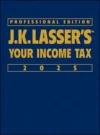No Profit Motive Without Charging for Work
Unless a taxpayer can demonstrate a profit motive, an activity is treated as a hobby. This means all income must be reported, but for 2018 through 2025, no deductions can be taken. The bar to deductions makes the profit motive determination essential in these years. One recent case illustrates that at a minimum, a taxpayer must charge for his or her service.
The case involved a taxpayer who worked as an employee in human resources while also running an education consulting business on the side. This consulting business assisted recent college graduates, military personnel reacclimating to civilian life, and at-risk women rejoining the workforce with finding suitable employment. She never charged a fee for her consulting services, but deducted various expenses on Schedule C related to the consulting activity.
The Tax Court said that even though her activities were laudable, she did not have a profit motive for her education consulting activities (Marlon G. Dasent, TC Memo 2018-202). Thus, the hobby loss rule applies. Prior to 2018, this rule limited deductions to the extent of income from the activity, and such deductions were not taken on Schedule C but as miscellaneous itemized deductions subject to the 2%-of-AGI floor. Here, with no gross income from the activity, she could not take any deductions.
Declining balance method
A rapid depreciation method determined by a constant percentage based on useful life and applied to the adjusted basis of the property.



